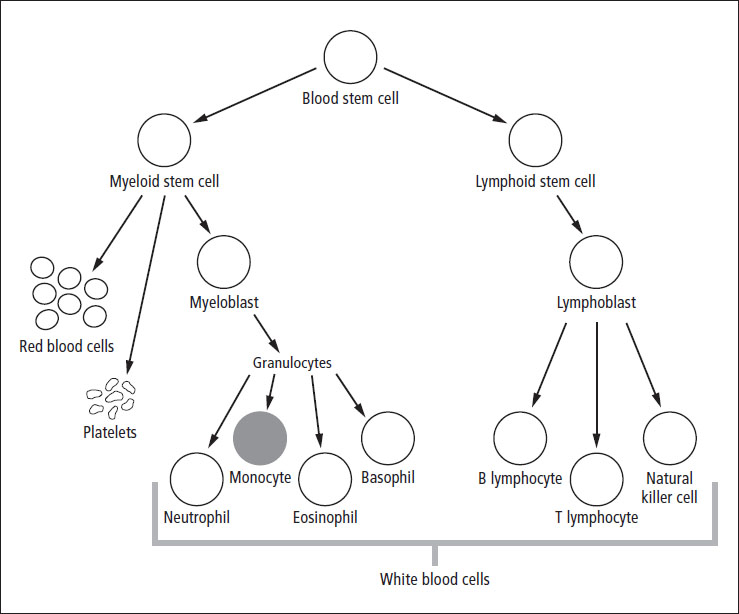Childhood Leukemia
JMML Is a Blood Disease
JMML is cancer of immature WBCs called monocytes, which would normally develop into healthy macrophages (see Figure 5–1). Macrophages float in the blood, killing foreign organisms, removing dead cells, and helping the body fight infection.
When cancerous monocytes appear in the bone marrow, they multiply rapidly and lose their ability to develop into mature macrophages. They begin to crowd out the healthy stem cells that would mature into WBCs, RBCs, and platelets. When this happens, infection, anemia, or bleeding may occur. After accumulating in the bone marrow, cancerous monocytes spill over into the blood and invade other organs such as the spleen, liver, and lungs.

Figure 5–1: JMML is a disease of the monocytes
Because treatments for the four main types of childhood leukemia are very different, it is crucial that sophisticated laboratory studies be performed at diagnosis to identify the type of leukemia and the best treatment.
My daughter was diagnosed with JMML at the age of 27 months. Although it is a chronic leukemia, it is particularly fast moving. My daughter had a partial match (my husband’s sister as donor) stem cell transplant four months after she was diagnosed. Today, she is eight years post-transplant, is in the fourth grade, and is the absolute joy of my life.
Table of Contents
All Guides- Introduction
- 1. Diagnosis
- 2. Overview of Childhood Leukemia
- 3. Acute Lymphoblastic Leukemia
- 4. Acute Myeloid Leukemia
- 5. Juvenile Myelomonocytic Leukemia
- 6. Chronic Myelogenous Leukemia
- 7. Telling Your Child and Others
- 8. Choosing a Treatment
- 9. Coping with Procedures
- 10. Forming a Partnership with the Medical Team
- 11. Hospitalization
- 12. Central Venous Catheters
- 13. Chemotherapy and Other Medications
- 14. Common Side Effects of Treatment
- 15. Radiation Therapy
- 16. Stem Cell Transplantation
- 17. Siblings
- 18. Family and Friends
- 19. Communication and Behavior
- 20. School
- 21. Sources of Support
- 22. Nutrition
- 23. Insurance, Record-keeping, and Financial Assistance
- 24. End of Treatment and Beyond
- 25. Relapse
- 26. Death and Bereavement
- Appendix A. Blood Tests and What They Mean
- Appendix B. Resource Organizations
- Appendix C. Books, Websites, and Support Groups

